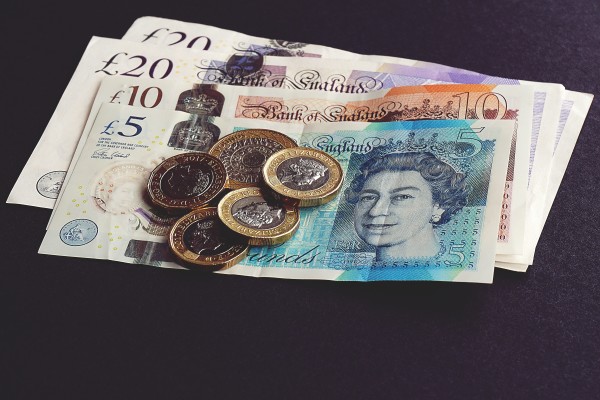

The most recent inflation data for the US shows prices have risen by more than 4 per cent, when the Federal Reserve’s target is 2 per cent.
The most recent data from the UK shows inflation has doubled to 1.5 per cent, below the Bank of England’s target of 2 per cent, but even then, the data was flattered by the UK government having reduced VAT during the year on certain items.
The market reaction to both of those pieces of data was a swift sell-off of equities and particularly of those areas of the market regarded as most sensitive to a rise in bond yields, while those areas that do best when economic growth is strong have rebounded.
Barry Norris, founder and fund manager at Argonaut Capital, says the reason technology shares have been selling is because "for most of the past decade, when there was no inflation, the only companies that had any sort of pricing power were technology companies selling products or services that were hard to replicate.
"But as inflation picks up, more companies will have pricing power, so you don’t need to pay high valuations for it, and that's why those types of stocks have sold off.”
Much of the inflation data we are seeing right now is transitory, according to George Lagarias, chief economist at Mazars, and comes about as a result of inflation being negative for much of 2020 and early 2021, which essentially makes much of the data this year look more stark than it is.
Lagarias says: “Central banks think the higher inflation we have now is transitory. And history shows that hyper-inflation only really happens when currencies are falling in value, which is not really a feature for the dollar now.”
He says the more medium-term outlook for the US and global inflation will, to a large extent, be determined by whether US President Joe Biden can secure sufficient support for his planned $4tn (£2.8tn) stimulus, which would be in addition to spending packages already announced.
Many market participants take the view that stories of inflation past will not be repeated this time as ageing populations, the impact of technological change, and high debt levels mean that the long-run outlook for inflation is fixed at a permanently lower level.
But John Leiper, chief investment officer at Tavistock, says the view that "it's different this time" makes no sense because the circumstances have changed. Previously (since the 1980s) the focus has been on controlling inflation, even if this meant economic growth was weaker, but as a result of the pandemic, governments are becoming more active in the economy, paying less attention to rising inflation and instead prioritising growth.
He says this will mean inflation rises for a prolonged period, and his response has been to sell his growth stocks and buy value.
Different types of inflation
Inflation generally comes in two forms: from the supply side or from the demand side. Supply-side inflation is often called cost-push inflation by economists, while inflation from the demand side is called demand-pull inflation.
The former happens when the cost of bringing goods and services to the market rises, while the latter occurs when demand for goods and services rises at a faster rate than the increase in the supply of goods and services.
The pandemic led to lockdowns around the world, which led to a severe collapse in demand-side inflation as people were simply unable to make some of their usual purchases.
As economies reopen, those purchases get made and inflation rises, particularly as enforced savings from lockdowns are deployed. But the shutdown of economies also had an impact on the supply side.
This is, for example, because makers of semiconductors cut production in anticipation of a prolonged fall in demand, while the oil price briefly dipped into negative territory at the pandemic’s height, and production slowed.
Lagarias says he is “not worried about supply-side inflation on its own”, as typically supply-side inflation is easier to control because when companies see demand rising, they adjust by increasing supply. While this takes time, it does mean that it is transitory in nature.
Richard de Lisle, who runs the VT De Lisle America fund, says: “Supply-side inflation is not the scary one. Bottlenecks are bigger than normal because of enforced changes in behaviour. The scary one is demand-side inflation as it is much more difficult to control.”
Outgoing BoE chief economist Andy Haldane recently described trying to control demand-side inflation as being akin to trying to hold a tiger by the tail, noting: "This tiger has been stirred by the extraordinary events and policy actions of the past 12 months."
The central bank currently expects consumers to swiftly spend about 10 per cent of their accumulated savings. The latest BoE data shows retail sales in April were 10 per cent above pre-pandemic levels, with clothing sales back to pre-pandemic levels.
In its most recent inflation update, the Office for National Statistics said that while inflation as a whole rose by 1.5 per cent in the year to the end of April, input costs were 9.9 per cent higher.
In a webinar last week, Philip Lane, chief economist at the European Central Bank, said that higher input costs will not lead to longer-term higher inflation.
Gero Jung, chief economist at Mirabaud Asset Management, says the risk of supply-side inflation could come from issues in the labour market. He says with furlough schemes and exceptionally high social security benefits paid as emergency measures during the pandemic, many people may not be better off not taking a job at this stage.
This restricts the supply of labour in the market, driving companies' costs higher, and only those companies that have pricing power would be able to pass those higher costs on.
In this scenario, the economy could develop into a situation of 'stagflation', where inflation remains persistently high, but economic growth does not come through. This mirrors the economy of the 1970s, and would imply either persistently higher inflation keeping growth lower, or companies being unable to pass on their higher costs to consumers, leading to reduced profits. In such a climate, the more cyclical type of equities would not perform well.
Lagarias says this is not the outcome he regards as the most probable, while De Lisle says governments have made the decision to prioritise growth rather than inflation, which is the opposite to the path taken at the end of the 1970s, when reducing inflation was viewed as the priority.
So the likelihood is, we end up with demand-side inflation, which boosts value stocks.
David Thorpe is special projects editor at FTAdviser



